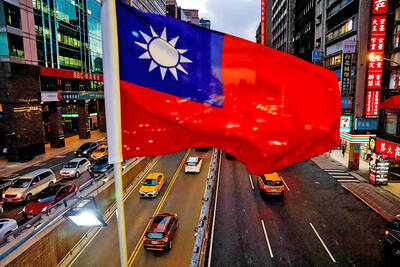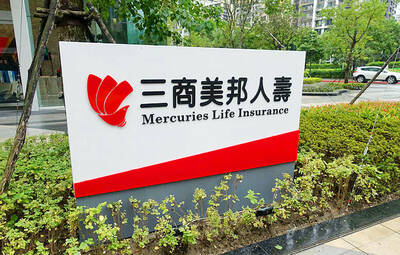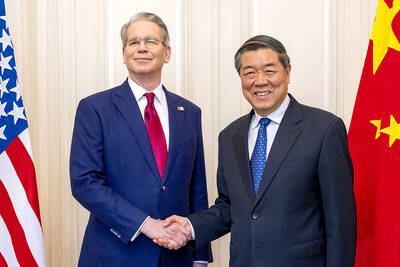South Korea is looking to build a strategic grain reserve and is planning to buy cargoes of corn and other staples, joining similar efforts by other Asian nations worried about high food prices and social unrest.
The reserve would be for grains other than rice, such as wheat and corn, and total about 12 percent of annual consumption.
Spiraling food prices, which have leapt to two-year highs, have spooked Asian governments, which fear a repeat of widespread unrest in 2008 when fears of grain shortages sent prices soaring and unleashed panic buying.
Prices of US corn, soybeans and wheat have soared since last year because of bad weather damaging crops and rising demand from China and India. This has created problems for South Korea, the world’s third-largest corn buyer.
Agriculture ministry sources said yesterday that Asia’s No.4 economy was seeking to buy 552,000 tonnes of corn, wheat and soybeans this year at basis prices over the Chicago Board of Trade futures with US grain sellers.
The cost was estimated at about 200 billion won (US$180.2 million), but excludes storage charges, they added.
“This move is to hedge,” one agriculture ministry source said, adding that the grain procurement would likely be in the US — the main grain exporter to South Korea.
Another source said the amount was based on the UN Food and Agriculture Organisation’s recommendation of stockpiling 12 to 17 percent of annual consumption.
Bangladesh is importing 200,000 tonnes of Thai parboiled rice in a government-to-government deal, sources said last week, part of a plan it announced last month to triple imports to boost stockpiles.
Indonesia last month surprised the market by buying 820,000 tonnes of Thai rice, nearly five times the volume initially sought. The country this month also announced it would boost rice stockpiles to 2 million tonnes from 1.5 million tonnes.
Sources at the South Korean ministries of agriculture and finance said the detailed grain procurement and storage plan could be finalized in March and they were looking at various options, such as building or borrowing storage sites in South Korea.
The government was also looking at a third option. It would only import grains if prices rally after signing futures contracts as a way to hedge against higher prices.
However, if grain prices remained flat, the government could resell the grains to a third party rather than taking delivery.
Local media reported on Saturday the country’s first-ever move to stockpile grains other than rice and equivalent to one-and-a-half months’ consumption. Media said the cost was about 10 billion won.
Agriculture ministry sources said the amount was the estimated deposit cost of the 200 billion won of grain purchases.
The government and industry sources, however, argued that it might be hard for the government to maintain such large grain inventories because of management costs and quality issues.
South Korea produces only 5 percent of food grains, excluding rice.
While the country imports some rice, any move to expand imports would be politically sensitive because the country has a production surplus and persistently weak rice prices.
Some private firms and traders, however, say the government’s lack of experience in buying on the international market could mean uncompetitive purchase prices.
“I doubt who among private firms would be willing to buy grains procured by the government, which might be more costly than their own imports as private firms usually have more expertise in such business,” a Seoul-based grain trader said.

France cannot afford to ignore the third credit-rating reduction in less than a year, French Minister of Finance Roland Lescure said. “Three agencies have downgraded us and we can’t ignore this cloud,” he told Franceinfo on Saturday, speaking just hours after S&P lowered his country’s credit rating to “A+” from “AA-” in an unscheduled move. “Fundamentally, it’s an additional cloud to a weather forecast that was already pretty gray. It’s a call for lucidity and responsibility,” he said, adding that this is “a call to be serious.” The credit assessor’s move means France has lost its double-A rating at two of the

AI BOOST: Although Taiwan’s reliance on Chinese rare earth elements is limited, it could face indirect impacts from supply issues and price volatility, an economist said DBS Bank Ltd (星展銀行) has sharply raised its forecast for Taiwan’s economic growth this year to 5.6 percent, citing stronger-than-expected exports and investment linked to artificial intelligence (AI), as it said that the current momentum could peak soon. The acceleration of the global AI race has fueled a surge in Taiwan’s AI-related capital spending and exports of information and communications technology (ICT) products, which have been key drivers of growth this year. “We have revised our GDP forecast for Taiwan upward to 5.6 percent from 4 percent, an upgrade that mainly reflects stronger-than-expected AI-related exports and investment in the third

Mercuries Life Insurance Co (三商美邦人壽) shares surged to a seven-month high this week after local media reported that E.Sun Financial Holding Co (玉山金控) had outbid CTBC Financial Holding Co (中信金控) in the financially strained insurer’s ongoing sale process. Shares of the mid-sized life insurer climbed 5.8 percent this week to NT$6.72, extending a nearly 18 percent rally over the past month, as investors bet on the likelihood of an impending takeover. The final round of bidding closed on Thursday, marking a critical step in the 32-year-old insurer’s search for a buyer after years of struggling to meet capital adequacy requirements. Local media reports

RARE EARTHS: The call between the US Treasury Secretary and his Chinese counterpart came as Washington sought to rally G7 partners in response to China’s export controls China and the US on Saturday agreed to conduct another round of trade negotiations in the coming week, as the world’s two biggest economies seek to avoid another damaging tit-for-tat tariff battle. Beijing last week announced sweeping controls on the critical rare earths industry, prompting US President Donald Trump to threaten 100 percent tariffs on imports from China in retaliation. Trump had also threatened to cancel his expected meeting with Chinese President Xi Jinping (習近平) in South Korea later this month on the sidelines of the APEC summit. In the latest indication of efforts to resolve their dispute, Chinese state media reported that